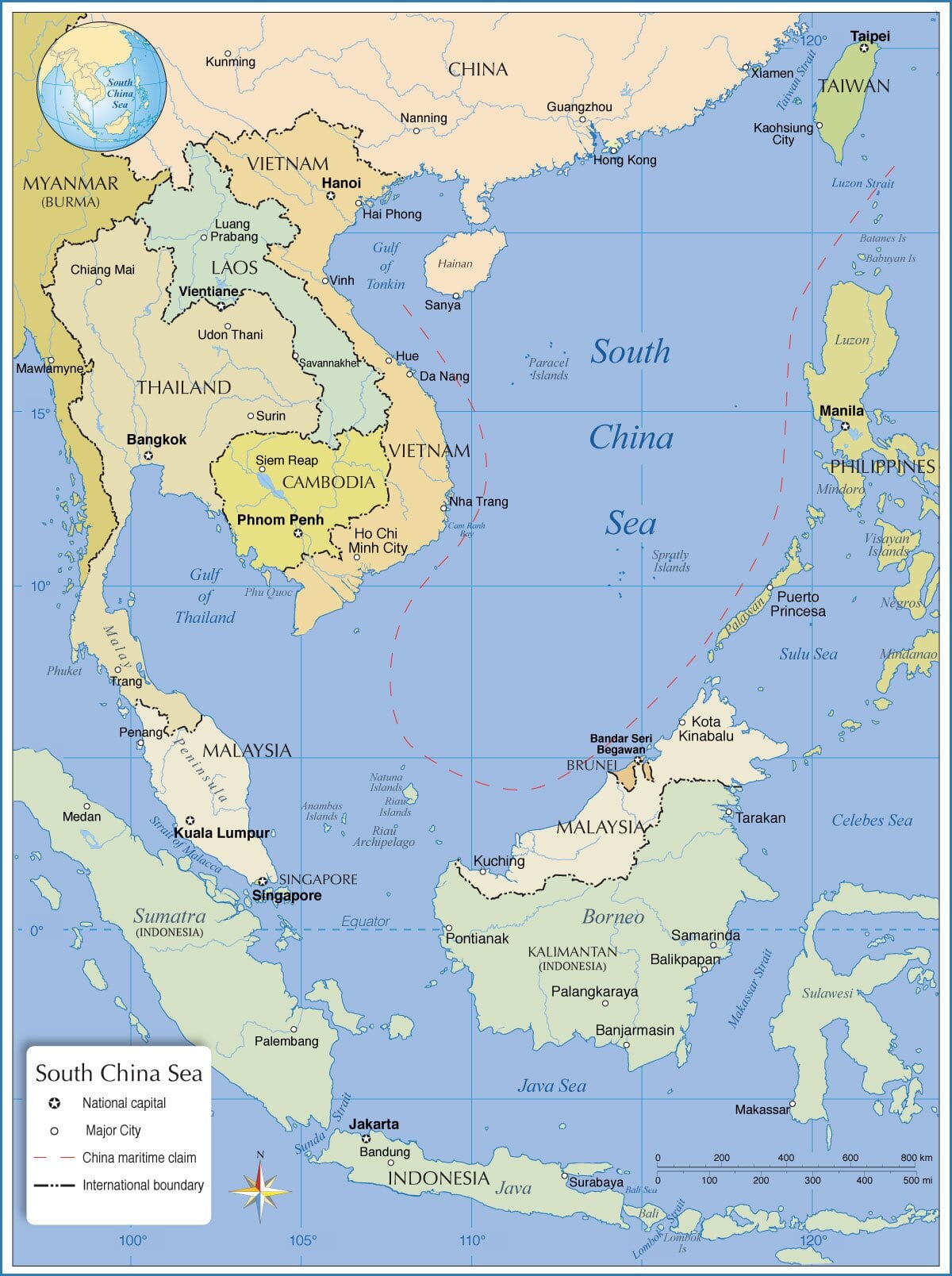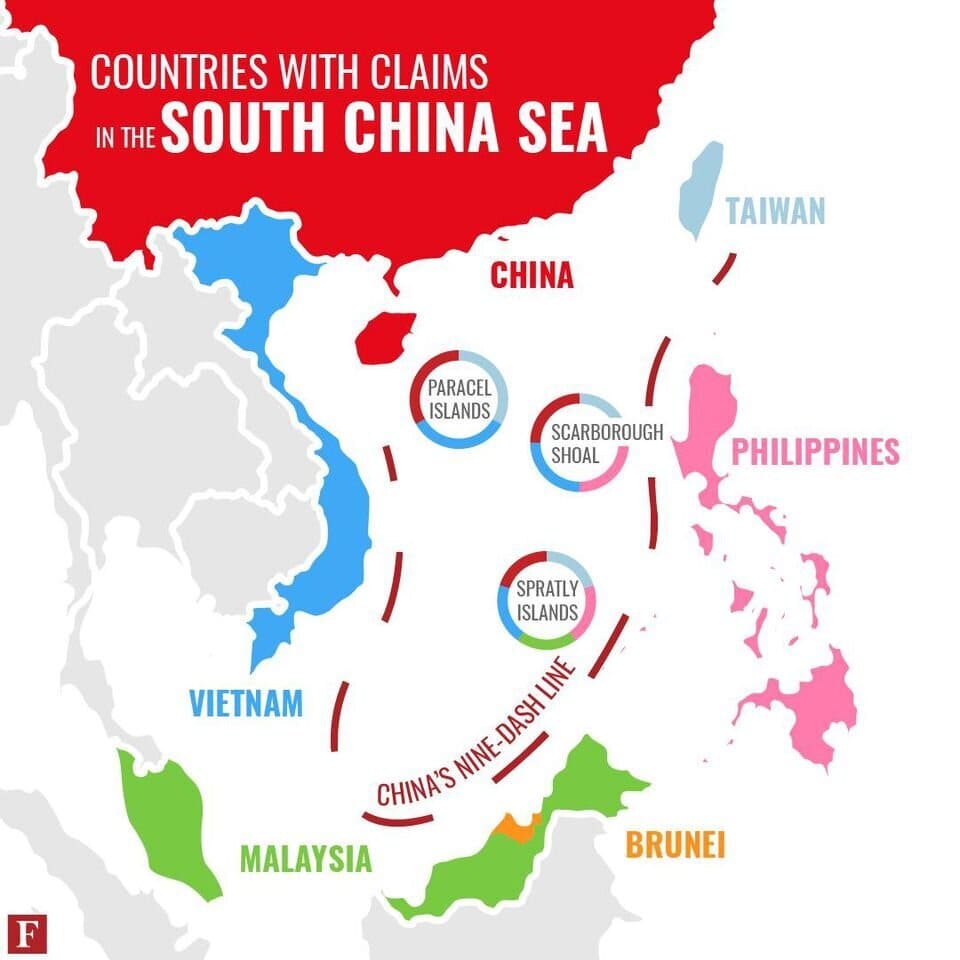South China Sea Dispute | 10 Feb 2021
Why in News
Recently, China warned off a USA warship sailing near contested Paracel islands in the South China Sea (SCS).
Key Points
About
- China’s Claim:
- China lays claim to nearly all of the South China Sea, including the Paracel Islands.
- However, Taiwan, Philippines, Brunei, Malaysia and Vietnam also claim parts of the region, believed to hold valuable oil and gas deposits.
- It has alleged that the USA warship broke into China’s Xisha (Paracel) island’s territorial waters without the permission of the Chinese government and accused USA for “seriously violating China’s sovereignty” and “harming regional peace.”
- China lays claim to nearly all of the South China Sea, including the Paracel Islands.
- USA’s Stand:
- The USA has argued that such exercises are in line with international law and help defend the right of passage through the region amid competing claims by China and other governments.
- It is in sync with the USA's continuous efforts to counter China’s assertion in SCS. Recently the USA Navy sent an aircraft carrier group into the South China Sea.
- South China Sea
- Location: South China Sea is an arm of western Pacific Ocean in Southeast Asia. It is south of China, east & south of Vietnam, west of the Philippines and north of the island of Borneo.
- It is connected by Taiwan Strait with the East China Sea and by Luzon Strait with the Philippine Sea.
- Bordering states & territories (clockwise from north): the People’s Republic of China, the Republic of China (Taiwan), the Philippines, Malaysia, Brunei, Indonesia, Singapore and Vietnam.
- Strategic Importance: This sea holds tremendous strategic importance for its location as it is the connecting link between the Indian Ocean and the Pacific Ocean (Strait of Malacca).
- According to the United Nations Conference on Trade And Development (UNCTAD) one-third of the global shipping passes through it, carrying trillions of trade which makes it a significant geopolitical water body.
- Location: South China Sea is an arm of western Pacific Ocean in Southeast Asia. It is south of China, east & south of Vietnam, west of the Philippines and north of the island of Borneo.
- Reasons For Dispute in the South China Sea:
- Contesting Claims Over Islands:
- The Paracel Islands are claimed by China, Taiwan and Vietnam.
- The Spratly Islands are claimed by China, Taiwan, Vietnam, Brunei and Philippines.
- The Scarborough Shoal is claimed by Philippines, China and Taiwan.
- China’s Assertion:
- Since 2010, China has been converting uninhabited islets into artificial islets to bring it under UNCLOS (examples would include Haven Reef, Johnson South Reef and Fiery Cross Reef).
- China has been changing the size and structure of the reefs by modifying their physical land features. It has also established airstrips on Parcel and Spratly.
- Chinese fishing fleets are engaged in paramilitary work on behalf of the state rather than the commercial enterprise of fishing.
- The US is very critical of this building of artificial islands and terms these actions of China as building a ‘great wall of sand’.
- Other Issues:
- Undefined geographic scope of the South China Sea.
- Disagreement over dispute settlement mechanisms.
- Undefined legal status of the Code of Conduct (COC) add to it.
- The different histories of distant, largely uninhabited archipelagos of the sea make the matter more complicated and multifaceted.
- Contesting Claims Over Islands:
- India's Stand:
- India has maintained that it is not a party to the SCS dispute and its presence in the SCS is not to contain China but to secure its own economic interests, especially that of its energy security needs.
- However, China’s increasing ability to decide and expand its role in the South China Sea has compelled India to reevaluate its approach on the issue.
- As a key element of the Act East Policy, India has started internationalizing disputes in the Indo-Pacific region to oppose China’s threatening tactics in SCS.
- Further, India is using its Buddhist legacy to make a strong bond with the Southeast Asian region.
- India has also deployed its navy with Vietnam in the South China Sea for protection of sea lanes of communication (SLOC), denying China any space for assertion.
- Also, India is part of Quad initiative (India, US, Japan, Australia) and lynchpin of Indo-Pacific narrative. These initiatives are viewed as a containment strategy by China.


